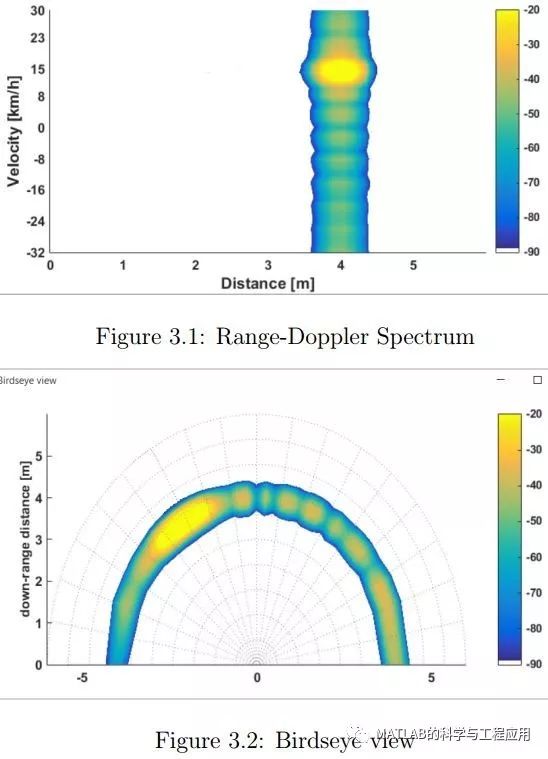
本文为荷兰特文特大学(作者:Suleyman Suleymanov)的硕士论文,共64页。
近年来,曾经主要用于军事的雷达技术,已经开始出现在许多民用领域,其中的一个领域是汽车工业。现在,我们可以在现代汽车中找到各种各样的雷达,用来帮助驾驶员确保安全驾驶并提高驾驶体验的质量。汽车工业的未来承诺提供一款完全自主的汽车,它可以在没有任何驾驶辅助的情况下自行驾驶。这些车辆将需要强大的雷达传感器,可以提供有关车辆周围的精确信息。这些传感器还需要一个计算平台,以确保对接收到的信号进行实时处理。
本论文的研究对象是探讨在NXP半导体公司开发的汽车调频连续波雷达的实时信号处理平台,这种雷达传感器的设计用于自动驾驶车辆。本文首先研究了多输入多输出调频连续波雷达的信号处理算法,结果表明,信号处理需要采用三维FFT。考虑到算法和应用的实时性要求,将特文特大学开发的32核实时多处理器系统Starburst MPSoC作为信号处理的基带处理器进行了性能评估,测试发现该多处理器系统不能满足应用程序的实时约束。
作为一个可替代的处理平台,提出了该算法的FPGA实现方案,并在Virtex-6 FPGA中实现,这些实现使用预构建的Xilinx IP核作为硬件来构建体系结构。该体系结构还包括一个MicroBlaze内核,用于生成算法的人工输入数据,并通过软件管理硬件组件的操作。设计结果表明,该结构能够提供可靠的距离、速度和方位信息输出。测量结果的精度受到距离、速度和角分辨力的限制,这些限制由射频前端的具体参数和设计的波形图决定。然而,由于内存转置操作带来的高延迟,无法在体系结构上实现实时性能。为了减少SDRAM转置过程造成的延迟瓶颈,已经测试了一些新的技术,但是没有一种技术具有任何显著的改进。
In the recent years, the radar technology, once used predominantly in the military, has started to emerge in numerous civilian applications. One of the areas that this technology appeared is the automotive industry. Nowadays, we can find various radars in modern cars that are used to assist a driver to ensure a safe drive and increase the quality of the driving experience. The future of the automotive industry promises to offer a fully autonomous car which is able to drive itself without any driver assistance. These vehicles will require powerful radar sensors that can provide precise information about the surrounding of the vehicle. These sensors will also need a computing platform that can ensure real-time processing of the received signals. The subject of this thesis is to investigate the processing platforms for the real-time signal processing of the automotive FMCW radar developed at the NXP Semiconductors. The radar sensor is designed to be used in the self-driving vehicles. The thesis first investigates the signal processing algorithm for the MIMO FMCW radar. It is found that the signal processing consists of the threedimensional FFT processing. Taking into account the algorithm and the real-time requirements of the application, the processing capability of the Starburst MPSoC, 32 core real-time multiprocessor system developed at the University of Twente, has been evaluated as a base-band processor for the signal processing. It was found that the multiprocessor system is not capable to meet the real-time constraints of the application. As an alternative processing platform, an FPGA implementation of the algorithm was proposed and implemented in the Virtex-6 FPGA. The implementations uses pre-built Xilinx IP cores as hardware components to build the architecture. The architecture also includes a MicroBlaze core which is used to generate the artificial input data for the algorithm and manage the operation of hardware components through software. The results of the implementation show that the architecture can provide reliable outputs regarding the range, velocity and bearing information. The accuracy of the results are limited by the range, velocity and angular resolution which are determined by the specific parameters of the RF front-end and the designed waveform pattern. However, the real-time performance on the architecture cannot be achieved due to the high latencies introduced by the memory transpose operations. A few techniques have been tested to decrease the latency bottleneck caused by the SDRAM transpose processes, however none of them have shown any significant improvements.
推荐公众号:电力电子技术与新能源

推荐公众号:MATLAB基于模型的设计

下载英文原文请点击“阅读原文”























 1512
1512

 被折叠的 条评论
为什么被折叠?
被折叠的 条评论
为什么被折叠?








